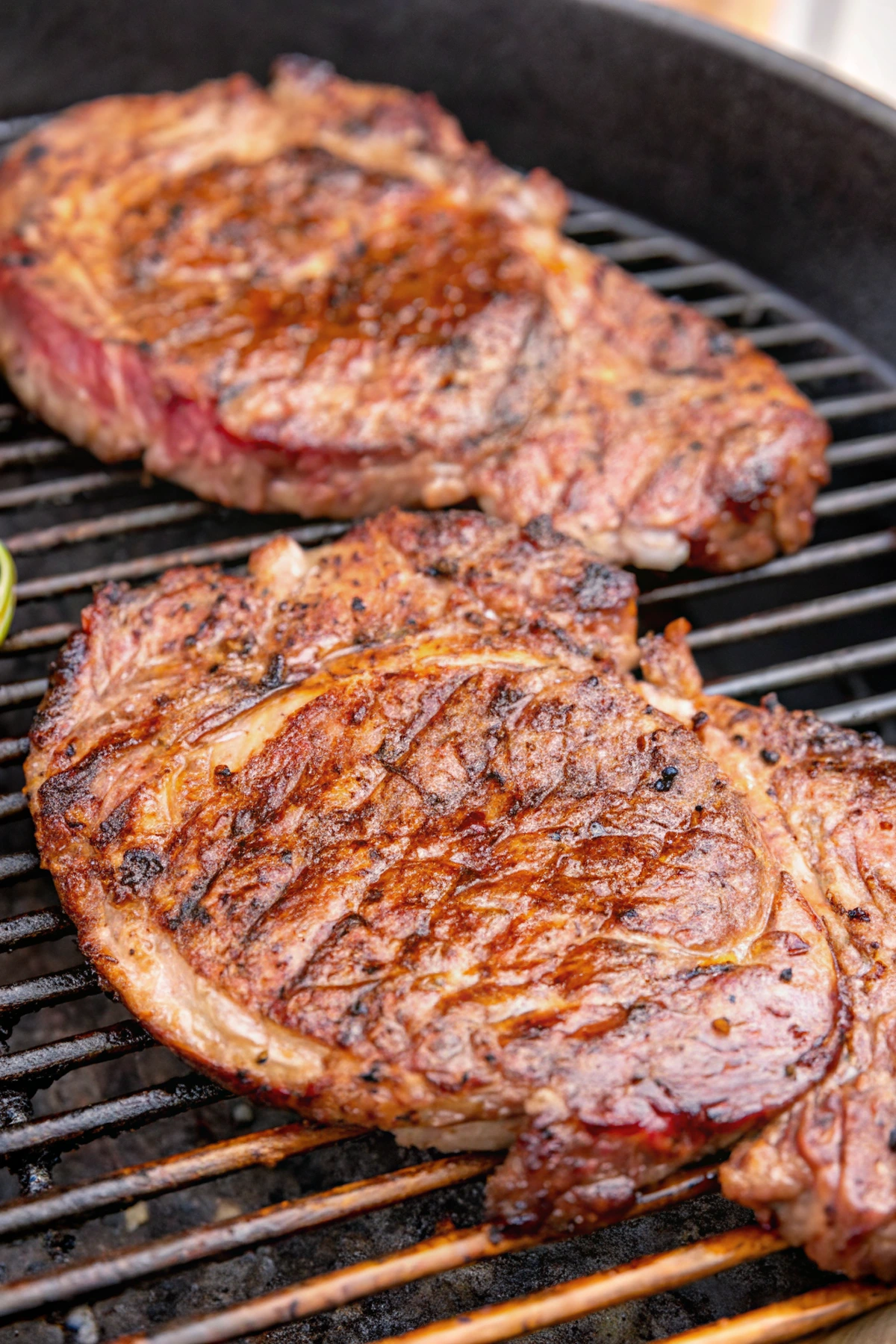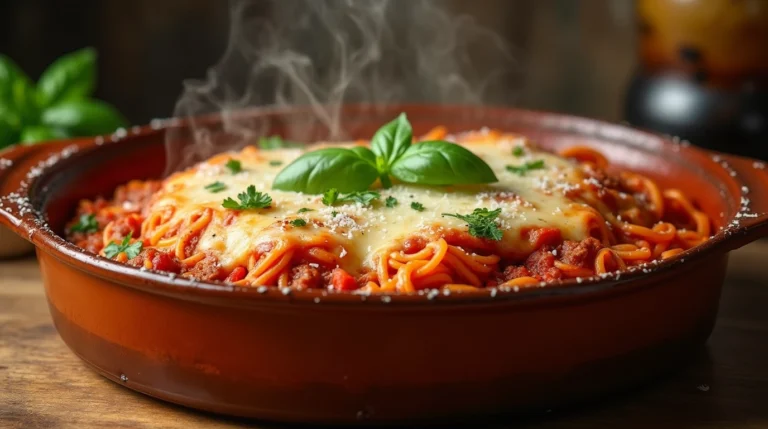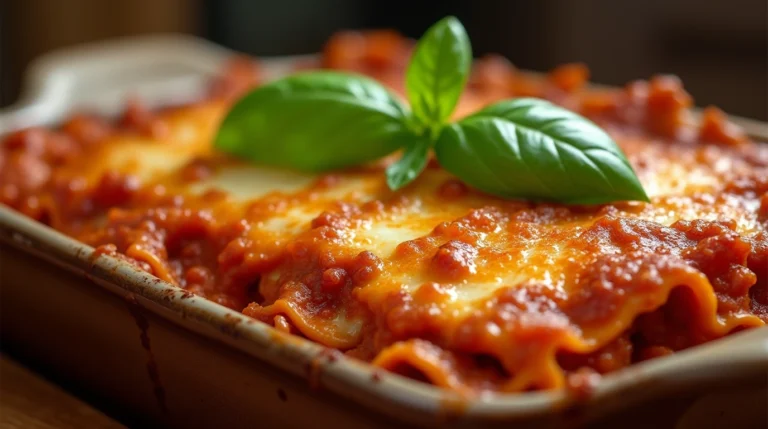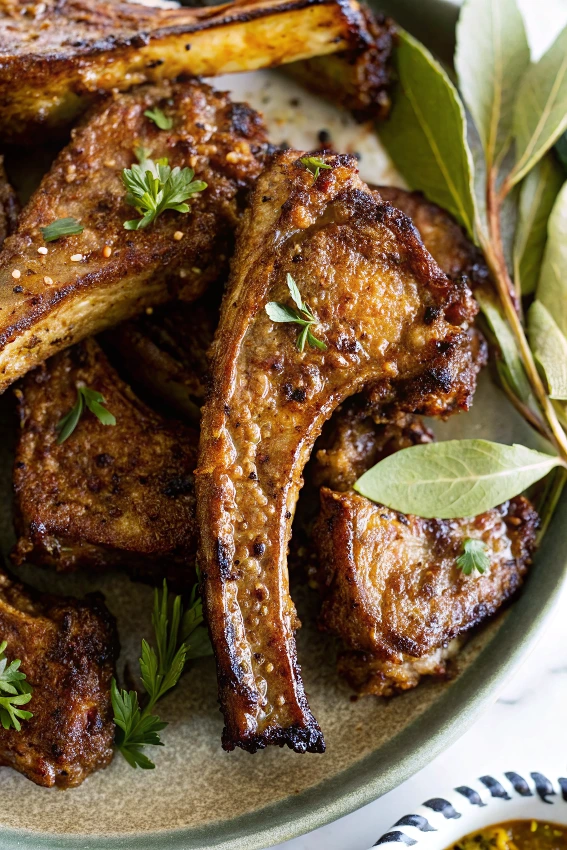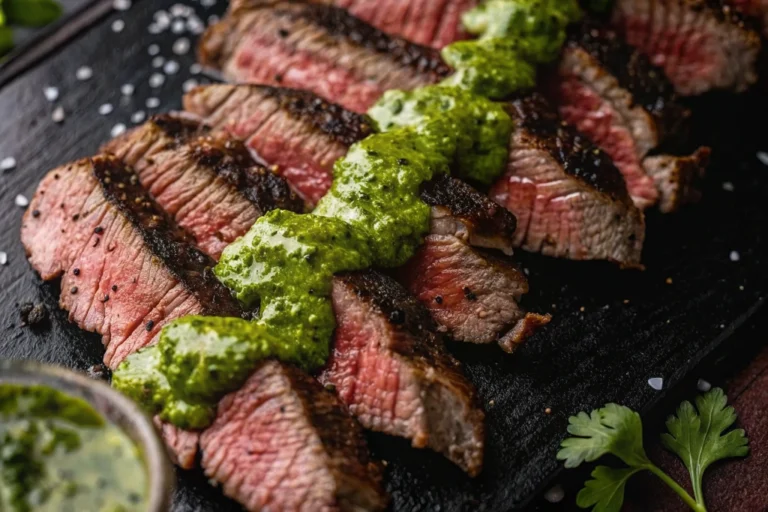Table of Contents
Looking for that restaurant-quality BBQ ribeye steak with a caramelized crust and buttery-tender center? This comprehensive guide walks you through selecting, preparing, and grilling the perfect ribeye every single time. Master the techniques pros use!
There’s something almost magical about that first bite of a perfectly grilled ribeye steak. That moment when the knife glides through like butter, revealing a rosy-pink center while the seasoned crust crackles ever so slightly. If you’ve ever wondered how steakhouses achieve that mouthwatering perfection, I’m about to let you in on all their secrets.
I’ve spent years perfecting my BBQ ribeye steak technique, and after countless backyard cookouts (and yes, a few memorable failures), I’ve nailed down a foolproof method that works every single time. Whether you’re firing up the grill for a special occasion or simply craving a luxurious weeknight dinner, this guide will transform you into the steak master of your neighborhood.
Why Ribeye Is the King of Steaks
Ribeye steaks hold a special place in the hearts of meat lovers everywhere, and for good reason. Cut from the rib section of the cow, these steaks are known for their exceptional marbling – those beautiful white streaks of fat that melt during cooking, creating an incredible buttery flavor and juicy texture that’s hard to beat.
What makes the ribeye particularly perfect for BBQ grilling is its ideal balance of fat and meat. The internal marbling bastes the meat from within as it cooks, while the outer fat cap caramelizes beautifully over the flames. This creates that distinctive rich flavor that makes perfect ribeye steaks so crave-worthy.
Each ribeye contains a complex network of muscles, including the flavorful cap (spinalis dorsi) that wraps around the central eye of the steak. This variation in muscle structure means you get different textures and flavors in each bite – making it one of the most interesting cuts to experience.
Selecting the Perfect Ribeye
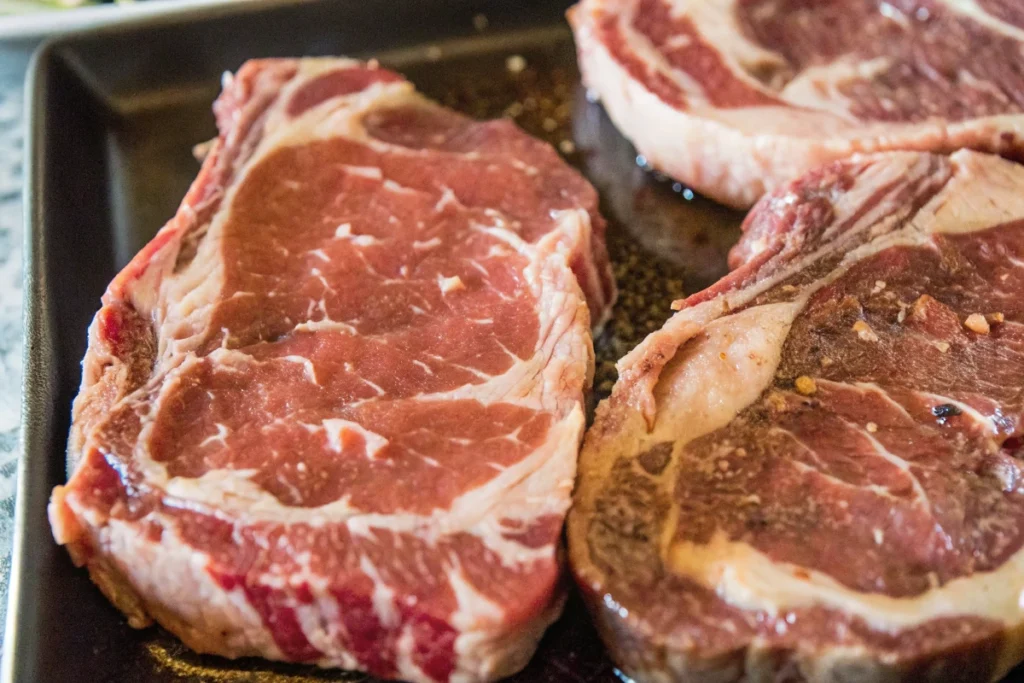
Thickness Matters
When shopping for the perfect BBQ ribeye steak, thickness is crucial. Look for steaks that are at least 1½ inches thick, with 2 inches being ideal. Thinner steaks cook too quickly, making it difficult to achieve that perfect sear outside while maintaining a juicy medium-rare inside.
Marbling Is Your Friend
Don’t shy away from marbling! Those white flecks and streaks of fat throughout the meat are flavor bombs waiting to explode. A well-marbled ribeye will be more tender, juicy, and flavorful than a leaner cut. USDA Prime offers the most marbling, followed by Choice and then Select grades.
Bone-In vs. Boneless
Both options make excellent BBQ ribeye steaks, but there are differences:
- Bone-in ribeyes (often called cowboy steaks) cook a bit more slowly and unevenly, but many chefs believe the bone imparts additional flavor and helps insulate the meat for more even cooking.
- Boneless ribeyes are easier to handle and provide more consistent cooking results, making them ideal for beginners.
Fresh vs. Aged
If available, dry-aged ribeyes offer a more concentrated, nutty flavor profile that many steak enthusiasts prefer. However, a fresh, high-quality ribeye will still deliver incredible results. The most important factor is freshness – look for steaks with a vibrant red color and minimal liquid in the packaging.
Essential Tools for BBQ Ribeye Success
Before diving into the cooking process, gather these tools for the best results:
- High-quality grill – gas or charcoal both work wonderfully
- Reliable meat thermometer – the secret weapon for perfect doneness
- Heavy-duty tongs – for precise steak handling
- Cast iron skillet – optional, but great for creating an incredible sear
- Timer – helps prevent overcooking
- Sharp knife – for proper slicing against the grain
- Heavy-duty aluminum foil – for resting your steak
Preparing Your BBQ Ribeye Steak
The Essential Dry Brine
The secret to restaurant-quality BBQ ribeye steak starts before it ever hits the grill. Dry brining is a game-changing technique that:
- Enhances flavor penetration throughout the meat
- Improves moisture retention during cooking
- Helps develop that gorgeous caramelized crust
Here’s how to dry brine your ribeye:
- Pat your steak completely dry with paper towels
- Season generously with kosher salt (about 1 teaspoon per pound)
- Place on a wire rack over a baking sheet
- Refrigerate uncovered for at least 2 hours, preferably overnight
- Before grilling, bring to room temperature for 45-60 minutes
This process allows the salt to initially draw moisture from the steak, then reabsorb it, creating a concentrated, seasoned interior while drying the surface for better browning.
Simple Seasonings for Maximum Flavor
While elaborate rubs and BBQ ribeye steak marinades have their place, sometimes simplicity yields the best results. My go-to seasoning combination includes:
- Coarse kosher salt
- Freshly ground black pepper
- Granulated garlic
- Fresh rosemary or thyme (optional)
Apply your seasonings right before grilling, pressing gently to adhere to the meat. Remember, you’ve already salted during the dry brining process, so go lighter on additional salt in your seasoning mix.
For the Adventurous: BBQ Ribeye Steak Marinade
While purists might argue that a quality ribeye needs nothing more than salt and pepper, a well-crafted marinade can introduce exciting flavor dimensions. If you’d like to try a marinade, here’s my favorite:
Bourbon BBQ Ribeye Marinade:
- ¼ cup bourbon
- 3 tablespoons soy sauce
- 2 tablespoons Worcestershire sauce
- 2 tablespoons brown sugar
- 3 cloves minced garlic
- 1 tablespoon Dijon mustard
- 1 teaspoon fresh cracked black pepper
- 1 tablespoon olive oil
Combine all ingredients and marinate your ribeye for 2-4 hours (not longer, as the alcohol can start breaking down the meat). Remove from marinade, pat dry thoroughly before grilling to ensure a proper sear.
Mastering the Grill: Temperature Zones Are Everything
The key to a perfect BBQ ribeye steak lies in utilizing different temperature zones on your grill. This two-zone setup gives you complete control over the cooking process.
Setting Up Your Grill
For charcoal grills:
- Light your charcoal and let it burn until covered with white ash
- Arrange coals to create a hot zone (direct heat) and a cooler zone (indirect heat)
- The temperature over direct heat should reach 450-500°F
For gas grills:
- Preheat with all burners on high for 10-15 minutes
- Keep one side on high (direct heat) and reduce the other side to medium-low (indirect heat)
The Reverse Sear Method for Thick Ribeyes
For steaks 1½ inches or thicker, the reverse sear method produces exceptional results:
- Start your steak on the cooler, indirect heat zone (around 275°F)
- Cook slowly until the internal temperature reaches about 110-115°F (for medium-rare)
- Remove temporarily while you crank the direct heat zone to maximum temperature
- Return the steak to the hot zone for a final sear, about 1-2 minutes per side
- Remove when internal temperature reaches 125-130°F (it will continue rising during rest)
This method creates a more evenly cooked interior with less of the overcooked “gray band” beneath the surface.
The Direct Heat Method for Thinner Ribeyes
For steaks under 1½ inches thick:
- Place directly over high heat (450-500°F)
- Sear for 3-4 minutes per side, rotating 45 degrees halfway through each side for crosshatch grill marks
- Remove when internal temperature reaches 125-130°F for medium-rare
Perfecting Your Timing: Doneness Guide
Timing is everything when grilling perfect ribeye steaks. Use a meat thermometer for precision, and remember that carryover cooking will raise the temperature 5-10°F during resting.
- Rare: 120-125°F (cool red center)
- Medium-rare: 130-135°F (warm red center) – the sweet spot for ribeye
- Medium: 140-145°F (warm pink center)
- Medium-well: 150-155°F (slightly pink center)
- Well-done: 160°F and above (no pink)
For the ultimate BBQ ribeye steak experience, I strongly recommend not cooking beyond medium. The beautiful marbling that makes ribeye special needs enough heat to render and baste the meat, but cooking too far diminishes this natural advantage.
The Essential Resting Period
The difference between a good steak and an exceptional one often comes down to patience. After removing your BBQ ribeye steak from the grill:
- Transfer to a cutting board or warm plate
- Loosely tent with foil (not wrapped tightly)
- Rest for 7-10 minutes minimum
During this time, magic happens – the juices redistribute throughout the meat instead of rushing out when cut. The internal temperature will continue rising about 5-10°F, completing the cooking process.
Finishing Touches for Restaurant-Quality Results
The Compound Butter Crown
For a finishing touch that will make your guests swoon, top your rested BBQ ribeye steak with a slice of compound butter. My favorite combination:
Garlic-Herb Compound Butter:
- 1 stick unsalted butter, softened
- 2 cloves garlic, minced
- 1 tablespoon fresh herbs (rosemary, thyme, or parsley)
- 1 teaspoon lemon zest
- Pinch of sea salt
Mix all ingredients, roll into a log using plastic wrap, and refrigerate until firm. Slice coins of butter to melt over your hot steak.
Perfect Slicing Technique
When it’s finally time to slice your masterpiece:
- Use a sharp knife to reduce tearing
- Identify the direction of the meat grain
- Slice perpendicular to the grain in clean, decisive cuts
- Aim for ¼ to ½-inch thick slices for the best eating experience
Troubleshooting Common BBQ Ribeye Problems
Flare-Ups and How to Handle Them
Those intimidating flames that shoot up when fat drips onto the coals? They’re not the end of the world if you know how to manage them:
- Keep a spray bottle of water handy for emergency control
- Create a “safe zone” on your grill where you can move the steak temporarily
- Never use a spray bottle directly on the meat – only on the flames
- Trim excessive external fat before grilling if flare-ups are a recurring issue
Addressing Uneven Cooking
Ribeyes sometimes cook unevenly due to their varying thickness and fat distribution. Combat this by:
- Using the reverse sear method for more even cooking
- Positioning the thicker end toward the hotter part of the grill
- Using tongs to briefly hold the steak on its side to render the fat cap
- Rotating the steak during cooking to compensate for grill hot spots
Perfect Pairings: What to Serve with Your BBQ Ribeye Steak
The right sides can elevate your perfect ribeye steaks to a complete dining experience:
Classic Companions
- Crispy roasted potatoes with rosemary
- Grilled asparagus with lemon
- Creamed spinach with nutmeg
- Simple green salad with vinaigrette
Wine Pairings
- Bold Cabernet Sauvignon
- Rich Malbec
- Complex Syrah
- Full-bodied Zinfandel
Beyond the Basics: Creative BBQ Ribeye Steak Recipes
Once you’ve mastered the classic preparation, consider these variations to expand your ribeye repertoire:
Coffee-Rubbed BBQ Ribeye
The slight bitterness of coffee creates an incredible crust that pairs beautifully with the rich meat:
- Combine 2 tablespoons ground coffee, 1 tablespoon brown sugar, 1 teaspoon paprika, 1 teaspoon garlic powder, and 1 teaspoon black pepper
- Apply to dry-brined steak before grilling
- Cook using the reverse sear method for best results
Asian-Inspired BBQ Ribeye Steak Marinade
This flavor profile brings umami and a slight sweetness:
- Mix ¼ cup soy sauce, 2 tablespoons rice vinegar, 1 tablespoon honey, 1 tablespoon sesame oil, 2 cloves minced garlic, and 1 tablespoon grated ginger
- Marinate for 2-3 hours maximum
- Pat completely dry before grilling
- Finish with sliced green onions and sesame seeds
Frequently Asked Questions
How long should I let my ribeye come to room temperature before grilling?
For best results, let your steak sit at room temperature for 45-60 minutes before grilling. This helps the steak cook more evenly from edge to center. If your steak is particularly thick (2+ inches), allow up to 90 minutes.
Should I oil my steak or the grill grates?
Lightly oil the grill grates rather than the steak itself. Before heating, fold a paper towel, dip it in high-heat oil (like grapeseed or avocado), and use tongs to rub it across the grates. This prevents sticking while allowing the steak’s surface to develop a proper crust.
Why does my ribeye curl up when grilling?
Curling usually happens when the outer band of fat contracts faster than the meat. To prevent this, make small cuts (about 1-inch apart) through the fat cap, being careful not to cut into the meat. These relief cuts allow the fat to expand without pulling the meat.
Is it better to use gas or charcoal for BBQ ribeye steak?
Both have advantages! Charcoal imparts a subtle smokiness and can reach higher temperatures for better searing. Gas offers precise temperature control and convenience. The perfect ribeye can be achieved on either type – focus more on technique than fuel source.
How can I tell doneness without a thermometer?
While a thermometer is strongly recommended for precision, the “finger test” can help in a pinch. Touch your thumb to each finger and feel the fleshy part at the base of your thumb:
- Index finger: rare (soft and spongy)
- Middle finger: medium-rare
- Ring finger: medium
- Pinky: well-done (firm)
Compare this feeling to the resistance you feel when pressing the center of your steak.
Your Turn to Grill the Perfect Steak
Now that you’re armed with all my secrets for creating the ultimate BBQ ribeye steak, it’s time to fire up your grill and put these techniques into practice. Remember, becoming a steak master is a journey – each time you grill, you’ll learn something new about your preferences, your grill’s personality, and the art of perfect timing.
I’d love to hear how your BBQ ribeye steak turns out! Did you try the dry brine technique? Experiment with a marinade? Find the perfect wine pairing? Share your experiences, modifications, and photos in the comments below – your insights might help another home chef on their quest for steak perfection.
Until next time, happy grilling, and may your steaks always be juicy on the inside, crispy on the outside, and absolutely delicious with every bite!
Hungry for more? Check out our top rated recipes :

